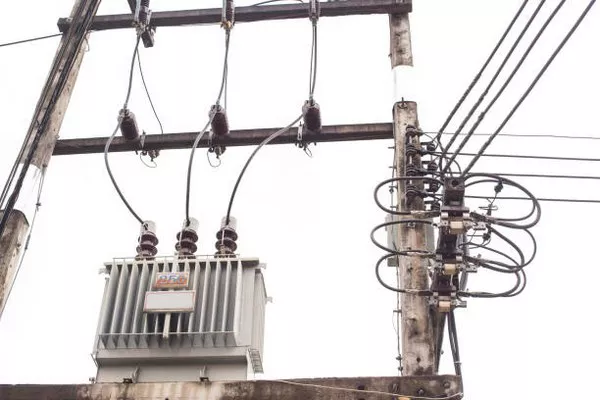In the realm of electrical power conditioning, constant voltage transformers (CVTs) play a crucial role in ensuring stable and reliable electricity supply, particularly in environments where fluctuations in voltage can pose significant risks to sensitive equipment. This article delves into the mechanics of CVTs, exploring their operation principles, benefits, applications, and key considerations for selecting and deploying these devices.
Introduction to Constant Voltage Transformers
A constant voltage transformer (CVT) is a type of power conditioning equipment designed to provide a steady output voltage despite variations in the input voltage. Unlike other voltage stabilizers that use semiconductor-based technologies like thyristors or transistors, CVTs employ a ferroresonant transformer principle for voltage regulation.
How Does a CVT Work?
The operation of a CVT relies on the unique characteristics of the ferroresonant transformer. Here’s a step-by-step breakdown of how a CVT functions:
Transformer Core and Windings: At the heart of a CVT is a ferroresonant transformer. This transformer comprises primary, secondary, and auxiliary windings wound on a common magnetic core.
Resonant Circuit: The primary winding of the transformer is connected in series with a capacitor. This arrangement forms a resonant LC (inductive-capacitive) circuit.
Input Voltage Variation: When the input voltage to the CVT fluctuates, the magnetic flux within the transformer core also varies. However, due to the resonant nature of the circuit, the flux change is compensated by the capacitive reactance in the primary winding.
Output Voltage Regulation: The secondary winding of the transformer is connected to the load. Despite variations in the input voltage, the CVT regulates the output voltage by maintaining the magnetic flux within the transformer core relatively constant.
Ferroresonance Phenomenon: The key to the CVT’s operation is the ferroresonance effect. This effect ensures that the transformer operates at a point where the core is on the brink of saturation, providing a self-regulating mechanism for maintaining a constant output voltage.
Isolation and Filtering: In addition to voltage regulation, CVTs offer isolation and some level of noise filtering due to the inherent characteristics of the transformer.
Advantages of Constant Voltage Transformers
Constant voltage transformers offer several advantages over other types of voltage stabilizers:
High Reliability: CVTs are known for their robustness and durability, with few moving parts and no semiconductor devices to wear out.
Wide Input Range: They can accommodate a wide range of input voltages without compromising the output stability.
Excellent Voltage Regulation: CVTs provide extremely tight regulation, maintaining output voltage within a very narrow tolerance range.
Isolation and Noise Reduction: CVTs inherently provide isolation between input and output, reducing electrical noise and disturbances.
Applications of CVTs
The unique characteristics of CVTs make them ideal for various critical applications:
Medical Equipment: Hospitals and healthcare facilities rely on CVTs to safeguard sensitive medical equipment from voltage fluctuations.
Telecommunications: CVTs are used to protect telecommunication systems, ensuring continuous operation and preventing damage to network infrastructure.
Data Centers: In data centers, where uninterrupted power is essential, CVTs are deployed to maintain stable voltage levels for servers and networking equipment.
Industrial Machinery: Manufacturing processes often require consistent voltage levels to prevent production disruptions and equipment damage.
Laboratory Instruments: Precision instruments used in research and development benefit from the stable output provided by CVTs.
Selecting the Right CVT
When choosing a CVT for a specific application, several factors should be considered:
Load Characteristics: Understanding the type of load (e.g., capacitive, inductive) is crucial for selecting an appropriate CVT.
Power Rating: Ensure the CVT can handle the maximum load power requirement with a safety margin.
Environmental Conditions: Consider factors like temperature, humidity, and installation environment to ensure optimal performance and longevity.
Regulation Accuracy: Different applications may require varying degrees of voltage regulation. Choose a CVT with the appropriate regulation accuracy for the intended use.
Conclusion
Constant voltage transformers (CVTs) are essential components in maintaining stable power supply in environments prone to voltage fluctuations. By harnessing the ferroresonant transformer principle, CVTs ensure that critical equipment receives consistent voltage levels, safeguarding against potential damage and downtime. Understanding the operation, benefits, and applications of CVTs is key to deploying these devices effectively in various industries, from healthcare and telecommunications to manufacturing and data centers. When selecting a CVT, it’s crucial to consider load characteristics, power requirements, and environmental factors to maximize performance and reliability. By leveraging the unique capabilities of CVTs, businesses and institutions can enhance the resilience and efficiency of their electrical systems.

